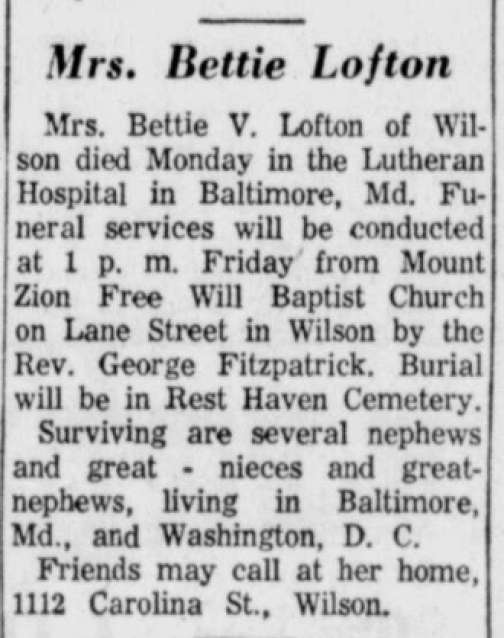The eighty-ninth in a series of posts highlighting buildings in East Wilson Historic District, a national historic district located in Wilson, North Carolina. As originally approved, the district encompasses 858 contributing buildings and two contributing structures in a historically African-American section of Wilson. (A significant number have since been lost.) The district was developed between about 1890 to 1940 and includes notable examples of Queen Anne, Bungalow/American Craftsman, and Shotgun-style architecture. It was listed on the National Register of Historic Places in 1988.
October 2018.
As described in the nomination form for the East Wilson Historic District, this building is: “ca. 1950; 1 story; Corner Grocery; concrete-block grocery with parapet front.” The building was classified as “non-contributing,” i.e. lacking historic value per the terms of the historic register. However, there is evidence of a grocery at the corner of Carolina and Carroll Streets as early as 1928.
In the 1928 and 1930 Hill’s Wilson, N.C., city directory, William F. Peacock is listed as the owner of a grocery at 1114 Carolina Street. Peacock, who was white, lived at 706 Academy Street.
Thomas W. Thorne, also white, is listed as owner of the grocery at 1114 Carolina in the 1941 Hill’s Wilson, N.C., city directory. The smaller attached building shown above seems to have been added during the previous decade, and Dublin Hargrove is listed as the proprietor of a fish market at 1114 1/2 Carolina.
In the 1947-48 Hill’s Wilson, N.C., city directory: Winstead Geo (c; Martha) gro 1114 Carolina h 1110. Also, Annie’s Beauty Shop (c; Mrs Annie Aldridge) 1114 1/2 Carolina Street. The store was offered for sale late in 1947.
Wilson Daily Times, 27 November 1947.
Now empty and decaying, this building housed a corner store into the 21st century. This 2015 photograph shows a sign, hand-lettered by Louis S. Thomas, for Gray Boy’s, the last active grocery in the building.
Photographs by Lisa Y. Henderson.














